Article of the Month -
february 2010
|
Land Acquisition in Developing Economies
Jude WALLACE, Australia

 This article in .pdf-format (21
pages and 1.4 MB)
This article in .pdf-format (21
pages and 1.4 MB)
1) This paper is based on the keynote
presentation that Jude Wallace gave at the 7th FIG Regional Conference
in Hanoi, Vietnam, 19-22 October 2009. This invited paper addresses the
issue of land acquisition in emerging economies that will be further
explored in the FIG publication to be launched at the FIG Congress in
Sydney in April 2010.
SUMMARY
Land administration theory has developed a new, multi-disciplinary
approach to building, designing and managing land administration systems
(LAS). The articulation of the approach runs parallel to development of
land indicators to improve reliability and usefulness of international
comparisons of LAS tools, especially in response to demands for good
governance.
These developments form the background to formulation of human rights
based land acquisition standards. However, land delivery processes in
general, and the sub-set of compulsory land acquisition and resettlement
processes, in particular, are complex and cross-cutting. In developing
countries, technical issues, rather than humanitarian issues, tend to
paralyze attempts to reform of land delivery processes. Capacity
building is therefore a key component of reform of land acquisition
processes. New tools are emerging that both improve technical capacity
and assist with application of human rights based land acquisition
principles.
1. NEW LAND ADMINISTRATION APPROACH
Features of the new approach
The analysis of land
problems is assisted by a new multi-discipline approach to land
administration. This approach features:
- Use of the land management paradigm to focus land administration
functions and related land policies and land information
infrastructures on sustainable development (Enemark 2004). The
country context remains the underlying starting point of any
decisions and strategies (Figure 1 below).
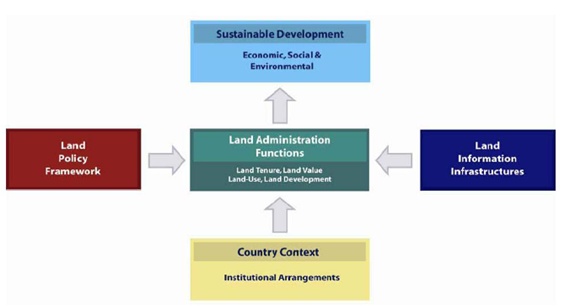
Figure 1. The land management paradigm
(Enemark 2004).
- A tool-box methodology that allows solutions to be developed in
the context of a country’s capacity and history. This methodology
contrasts with the out-dated, one-size-fits-all method of applying
technical Western land administration tools to countries where land
markets, if any, are informal and capacity is minimal. Figure 2
below shows the basic idea of a building a local land administration
system (LAS) using suitable tools to perform essential functions
such as registration, tenures security, cadastres, boundary
management, disputes, professional regulation and many others.
Ideally, the selection of tools is influenced by best practice
concepts, and the country’s fundamental land principles.
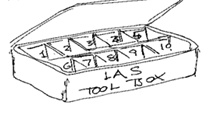
Figure 2. The land administration system tool
box (Enemark 2005)
- Identification of new opportunities associated with
technologies, especially spatial technologies (Williamson, Enemark,
Wallace and Rajabifard, 2010). Spatial technologies alter the range
of tools available to nations.
This multi discipline approach is described in detail by Stig Enemark
(2009). If used cleverly, the approach improves management of land,
information and, ultimately, reforms processes in all economic sectors –
government, business and civil society. The LAS needs to be designed
specifically to capture the new opportunities. National agencies,
institutions, processes and policies must operate according to a
coherent design. The design is especially essential if information is to
be used effectively. For example, the ability to utilize spatial
technologies depends on planning and building layers of land information
so that they are interactive. In mature systems, location or place
becomes a means of organising and sorting all kinds of spatial
information. The cadastre, especially the reliable, large scale land
parcel map that defines the way people actually use, think about and
organise their land, forms the fundamental layer of spatial information
in a national spatial data infrastructure (SDI). The take up of
geographic information systems (GIS) in product management, property
management, transport, emergency services and many other applications is
assisted. Once information is organised, place or location is
confidently identified according to scientifically reliable methods so
that other non-spatial information can be organised according to place
(Williamson etc). The multi-disciplinary land administration approach
ultimately facilitates spatial enablement the government, business and
society.
Given the comparatively recent arrival of the new spatial
technologies, no country has yet achieved this ideal LAS. The importance
of the new approach however cannot be neglected. Every nation is
constantly engaged in building its LAS and managing its land. The
message is to design changes that build systems that use the new
approach to deliver overall sustainable development. The new approach is
particularly relevant to developing countries with limited resources.
Financial and capacity limitations can be overcome if nations are able
to justify the financial investment in technical and human resources
needed in their LAS. Tracking of comparative national performance in
land administration functions is increasingly providing incentives for
take-up of modern systems.
Development of “land indicators”
Alongside the theoretical identification of the multi-discipline
approach to land administration, another related revolution in land
information has improved comparative methodologies. After about 1995
international agencies made concerted efforts to develop “land
indicators”, capable of being integrated with more general indicators.
The general indicators include, for example,
- corruption perceptions (Transparency International,
www.transparency.org ),
- wealth and living standards (Gini index of inequality in income
or expenditure,
http://www.photius.com/rankings/economy/distribution_of_family_income_gini_index_
2009_0.html
- environmental comparisons such as the Global Reporting
Initiatives
www.globalreporting.org
www.globalreporting.org
for measuring economic, environmental and social performance, a
collaborating centre of the UN Environment Program, UNEP,
- business comparisons (World bank, Doing Business Reports, since
2005, www.doingbusiness.org
),
These general indicators and many others now appear as routine
datasets available through the Internet.
Moving from general indicators to land indicators, Alain
Durand-Lasserve (2009) and Stig Enemark (2009) found a growing
coordination of efforts. Durand-Lasserve identified lead agencies:
- in urban areas, as the World Bank and DBS banking group
UN-HABITAT, and others.
- in rural areas, International Fund for Agricultural Development
(IFAD) and the International Land Coalition (ILC), and
- in mixed areas, Millennium Challenge Corporation (MCC), USAID
and Inter American Alliance for Real Property Rights (IARPR,
www.landnetamericas.org/Alliance/ExecutiveSummary.asp?m=21)
Many other agencies do similar work. Land indicators, both existing
and under construction, cluster around measuring tenure security, land
access and distribution, land markets, effectiveness of land
administration systems and, newly arrived, land governance. Tony Burns
(2008) summarised the following specific land indicators available on
the Internet:
- Real Estate Transparency Index, Jones Lang Lassalle
- Access to Land Indicators, IFAD
- Doing Business, property registration, World Bank
- International Property Rights Index, de Soto Institute
- Urban Governance Index, UN-HABITAT
- Access to Common Property Index, International Land Coalition
(ILC)
- Global Corruption Barometer (land indicator in 2008)
- Forced evictions, Centre on Housing Rights and Evictions (COHRE)
- Legal and Institutional Framework Index (Global Urban
Observatory Group)
Burns noted that these were limited in their ability to track changes
in time or to identify specific policy interventions. A better designed
set of indicators was needed to inform decision makers on strategic
improvements to land governance. Perhaps the culmination in these
efforts can be seen in the efforts of the World Bank and Land Equity
International to identify indicators capable of testing good governance
in land administration and to apply them in countries as diverse as
Kyrgyz Republic, Burkina Faso, Indonesia, Tanzania and Peru (the initial
case studies). The theoretical framework of land indicators was
distilled into “applied” indicators identified in Figure 3.
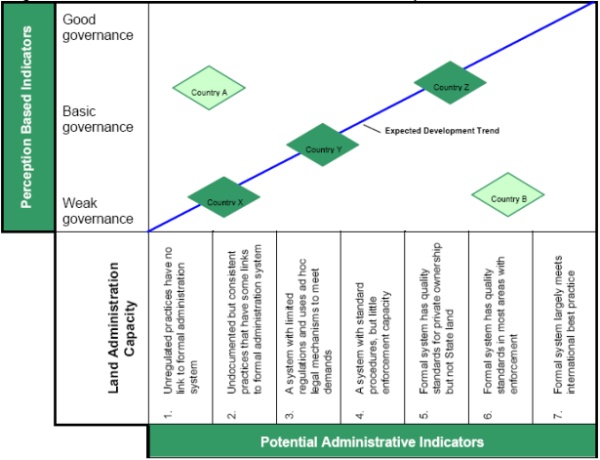
Figure 3. Co-relation between Governance/Land
Administration Developments (Land Equity International Pty Ltd 2008)
Level 7 of potential administrative indicators is achieved by few
countries, roughly those 35 or so countries who benefit from effective
national-scale LAS and free markets in land and properties, including
most members of the Organisation for Economic Co-Operation and
Development (OECD). Some countries have made remarkable progress
including countries in Eastern Europe and Central Asia (excepting
countries with local problems such as Tajikistan, Albania and the
Ukraine), especially those driven by the desire to gain access to the
European Union.
Focus on governance in relation to land administration, and good
governance as a whole-of-government standard, changed land
administration as a discipline. In the words of Alain Derrand Leserve,
attention moved away from land administration good governance to land
governance. This mirrored the shift from technical tools of land
administration towards a broad suite of tools to implement the new land
administration theory and the land management paradigm. The over all
coherence of a LAS is then focused on national governance capacity to
deliver sustainable development using tools appropriate for the
country’s situation.
2. GOOD GOVERNANCE IN LAND ADMINISTRATION
Developing the theory
Good governance in land administration is now the primary
over-arching aim of well designed land projects. A simple summary of the
drivers to deliver good governance in land is illustrated in Figure 4.

Figure 4. The drivers of good governance in
land administration, James Buchanan 2008
The indicators of good governance can be usefully clustered around
three outcomes: responsibility, empowerment of people and delivery of an
objective legal framework, in Figure 5.

Figure 5. Clustered indicators of good
governance in land administration, James Buchanan 2008
Good governance literature grew substantially after 2005. Principal
documents in this trend include the FAO publication on Good
Governance in Land Tenure and Administration (2007), and the World
Bank comparative study on Governance in Land Administration
initiated in 2007 and continuing. Recent additions to the library
include the FAO Land Tenure Working Papers, especially three of 2009:
- #8. Voluntary Guidelines for Responsible Governance in Tenure
of Land and Other Resources: From Civil Society Perspectives,
Jan 09
- #9. Issues from an International Institutional Perspective,
May 09, and
- #10. Discussion paper “Towards Voluntary Guidelines on
Responsible Governance
(
www.fao.org/nr/tenure/infores/lttpapers/en/ ) May 09.
These three recent papers responded to substantial copious studies
and research. Paper #9 involved distillation of another 56 international
documents to derive 14 basic principles in land tenure and natural
resources (Land Tenure Working Paper #9, 2009 page 1).
Communicating the theory
Among the 200 (plus or minus) jurisdictions of the world charged with
national level land administration, only about 30-35 countries achieve
national good governance standards most of the time. For the other 170
(plus or minus) jurisdictions, upgrading of their LAS remains a
challenge. Assistance is provided to decision-makers by publications
especially designed to explain problems and possible solutions in
understandable ways. Examples include FAO’s Good Governance in Land
Administration, Principles and Good Practices (2009a) Figure 6 below.
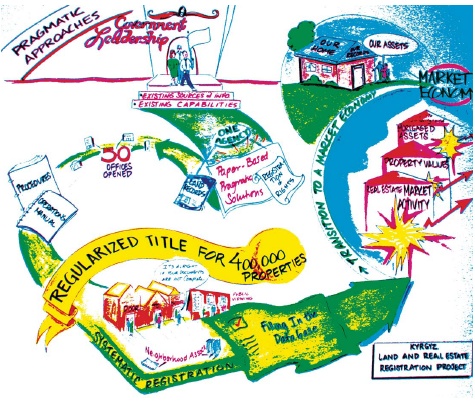
Figure 6. Easily understood and accessible explanations of good
governance in land (FAO 2009d, page 20)
In the context of land delivery and service upgrading, UN-HABITAT
produced a simple and accessible version of their detailed Handbook on
Best Practices, Security of Tenure and Access to Land, (2004a) showing
how to make land available for development (Figure 7).
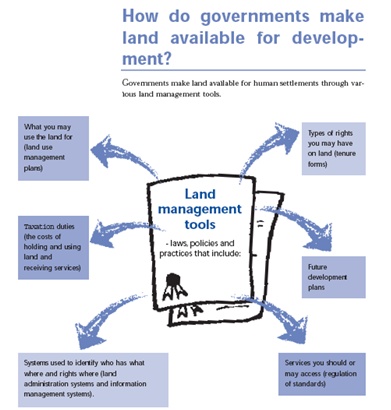
Figure 7. Accessible land management tools.
UN-HABITAT 2004b
These publications, and many others of similar type, aim to assist
decision-makers in their tasks of managing land and building sustainable
LAS. They are now an essential part of knowledge transfer that underpins
good governance capacity building. They form the background to
consideration of how a nation might handle the essential task of
delivering land to its people.
3. LAND DELIVERY
The scale of demands
Every process in land administration is, of course, important and
should be tested both against the new land administration system theory,
and the evolving good governance standards. However, land delivery
processes, and especially the sub-set of processes related to compulsory
land acquisition and resettlement, are probably the most complex,
under-examined and prone to uncoordinated responses. Hence land delivery
in developing countries provides a context in which the established
processes almost always fail when tested against emerging land
governance standards and modern land administration approaches.
In many countries, land delivery is at crisis levels. The processes
often involve geo-politics, foreign investment and development aid
interests. In most countries, formal management of land markets is
partial, driving many market activities towards informalism and ad hoc
approaches. Land delivery problems are shared by many developing
countries because their processes of land delivery and urbanisation are
fundamentally disorganized.
Lack of capacity is exacerbated by increasing demands for land and
spontaneous conversion of existing land uses. Agribusinesses, tourism
and industrial facilities and promotion of agrofuels require millions of
hectares and have devastating impact on human settlements and forests.
Increasing conversion of agricultural land for residential, industrial,
and other international investment projects is a major issue especially
for many sub-Saharan African countries, and Asia and Pacific Region
countries, especially Viet Nam and Indonesia. Simultaneously, the formal
delivery on a mass scale of small parcels for poor housing and work
places remains beyond the capacity of most governments despite massive
movement of people from rural to urban areas.
LAS delivery tools in theory
Amid this complex range of pressures, land administration theory
needs to identify a series of tools for land delivery consistent with
good government standards. Standard tools that deliver land for private
and public purposes fall into two broad categories: market acquisition
systems and human rights based acquisition systems.
Market acquisition systems
In developing countries use of formal land markets as a land delivery
mechanism fails to meet the tests of capacity. Four common problems are
well documented.
- The ability to define a “market price” is often problematic. The
most common cause of price tension is setting the value of land
destined for take-over on the basis of existing land uses,
principally farming or slum housing, and not on the basis of post
development uses, often lucrative industrial and residential
estates. Original owners and occupiers who are moved often regard
acceleration of land values as undeserved “windfalls” for the
developers.
- The secondary problem with pricing is reliance on government set
values, rather than transparent values set by land trading in an
open market recorded in formal systems.
- The property base essential for a functioning the market system
is usually inadequate: land rights claimed by owners and occupants
are unregistered or even undocumented. The targeted land is often
held in insecure arrangements, social tenures (Wallace 2009 ) and
informal systems. Price mechanisms in these cases remain flawed,
even with willing sellers.
- Lack of participation and cooperation among the occupiers and
owners in their removal from their businesses and homes makes the
trauma of physical dispossession (whether forced or not) their most
indelible memory of the process.
Human rights based acquisition systems
A human rights model of compulsory land acquisition is still under
construction. In broad terms the model seeks to solve the problems that
arise when countries with predominantly informal land markets try to use
market based solutions. The model adds additional components to land
delivery processes designed to empower land occupiers and owners. In
broad terms, these components demand land takers:
- Acknowledge entitlement of all displaced persons, including
persons with formal legal rights, persons whose claims to land are
potentially recognizable under national law, and persons who have
neither formal legal rights or land claims recognized or even
recognizable under law, such as squatters and encroachers.
- Ensure that all displaced persons are eligible for
resettlement assistance and compensation for loss of non-land and
land assets, including those without legal titles to land or any
recognizable legal rights to land. Loss of employment, not just loss
of land to occupy and use, should be compensated.
- Calculate the rate of compensation at full replacement cost.
- Provide relocation assistance for physically displaced persons,
including a livelihood assistance or income rehabilitation program
for economically displaced persons at full replacement cost.
- Provide meaningful socialization and consultation with affected
persons and other related parties about the project and its impact
on communities in the early project preparation stage and at other
crucial stages.
Most of the large international institutions apply some or all of
these standards for land acquisition or compulsory purchase designed to
both respect the rights of existing land users and owners and to deliver
secure tenure to developers, especially for public projects and projects
funded by development aid. As a general observation, even if the initial
costs of the land and the compensation constitute a high percentage of
the cost of the overall development, the budget will be justifiable
especially if land disputes are minimized and secure tenure is delivered
to the new owners.
3 BUILDING THE HUMAN RIGHTS MODEL OF COMPULSORY ACQUISITION
STANDARDS
Displaced persons protection
Parallel with the international efforts to develop good governance
indicators in land administration, professional groups, institutions and
development aid specialists are articulating appropriate indicators of
land acquisition through compulsory procedures. To complicate matters,
many acquisitions involve conquest, war and revolution. Thus a starting
point involves looking at standards of treatment of displaced persons
organised through the international efforts at resettlement of refugees,
the world’s largest groups of displaced persons, especially the refugee
displacement principles. These Pinheiro Principles, the UN Principles
on Housing and Property Restitution for Refugees and Displaced Persons,
from Centre on Housing Rights and Evictions (COHRE undated) are the
starting point in thinking about the human consequences of displacement.
Displacement consequences are experienced regardless of whether
interference is generated by international, intranational, or
non-national land taking activities. In terms of designing land
administration systems, nation states therefore need to anticipate the
social and human consequences of displacement by small and large scale
projects. The land acquisition processes that are institutionalized must
minimise civil unrest and disputation. The initial cost is, of course,
high. The value of these processes are however long term, especially in
their contribution to civil peace and elimination of land disputes.
Protection of people affected by land projects
International development aid agencies are also engaged in setting
standards for a human rights based model. Multilateral financial
institutions have institutionalized pro-poor and humane processes for
land delivery. The Asian Development Bank, for example, carefully
articulated and updated safeguard policy statements for compulsory take
over in 2009, especially applicable in Asia and the Pacific where 70% of
the world’s 150 million Indigenous People reside (ADB Safeguard Policy
Statements 2009, page 2). Other major development banks, including the
World Bank, the International Finance Corporation (whose standards are
adopted by 60 commercial banking institutions), the European Bank for
Reconstruction and Development, and the Inter-American Development Bank
(ADB 2009, page 2), all have standards aimed at protecting people whose
land or life styles are targeted for take-over which must be applied in
project development.
An attempt to organise the multitude of international standards was
undertaken in a Seminar on Compulsory Purchase and Compensation in
Land Acquisition and Takings, 2007, September 6-8, Helsinki, Finland
by a large number of interested parties, including FIG Commission 9,
Baltic Valuation Conference, FAO, World Bank, and others. The seminar
aimed to -
- Identify the legal structures and practices in compulsory
purchase and compensation in different countries.
- Determine if compensation laws, valuation methods and processes
will lead to full and just compensation and identify possible
shortcomings.
- Find possible and effective solutions to problems especially
appropriate for developing countries suffering severe capacity
limitations. Identify what are the best practices and what
principles should be taken into consideration or should be avoided,
within existing competencies.
- Identify future research directions.
http://www.tkk.fi/Yksikot/Kiinteisto/FIG/index.htm
FIG Working Group 9.1, the Global Land Tools Network (GLTN), and
others are working on guidelines for compulsory purchase and
compensation, to be finalized and announced at the FIG Congress in
Sydney in 2010. The process of development of these guidelines is open
and democratic, seeking participation from as wide a group as possible
through a questionnaire process run through FIG and GLTN -
http://www.fig.net/commission9/ and returnable on 20 August 2009.
The scope of the questionnaire was broad, reflecting the scope of issues
that are opened up when land development is proposed. The questions are
framed to inspire a well thought out human rights based acquisition
process that is compatible with the market based processes insofar as
these are available. These guidelines aim to deliver long term civil
peace derived from participation of land owners and users in the
processes of taking and redeveloping their land, delivery of security of
tenure and freedom from land claims for new users, and dispute
minimization.
These and other initiatives are refinements of the general good
governance framework for land administration, especially for land and
resource tenures (Civil Society Report, FAO 2009). One key observation
however is drawn from experiences of countries in South East Asia in
particular and developing countries in general. These emerging standards
of pro poor and humane land acquisition suffer in implementation because
projects in developing typically encounter technical problems because
they lack ability to formally manage delivery of land, both in general
and for specific projects.
Getting humane land acquisition theory to work in practice
Compulsory land purchase is part of the larger question is land
delivery itself – most developing countries experience difficulties in
delivering land for any purpose through formal systems and hence tend to
rely on ad hoc responses. Common characteristics of these responses
include –
- “Deal tenures” specific to a project (usually for large tourist
or industrial projects) which are negotiated by the parties in
informal and, sometimes, concealed arrangements.
- Ad hoc and informal land delivery for the poor through
squatting, encroaching or participating in informal markets (their
most common means of acquiring land). These delivery systems leave
the poor with little or no proof of their association with land.
- Under-funding of delivery of land for poor housing and
workplaces (contrast Viet Nam where provision of pro poor housing is
relatively successful and avoids large scale residential slums) .
- Mass land acquisition and clearance for urban renewal: China
provides the best known examples. Urban renewal on mass scale
usually does not comply with best practice in land acquisition
because activities involve forced evictions and demolition of
historical and personal spaces.
- Forced land use changes: Indonesia and its neighbours experience
massive conversion of natural forest to plantation or wasteland
through processes that disregard Indigenous Peoples and traditional
occupiers.
- Forced evictions from land needed for private purposes, often
with valuation for compensation set at government assessed values
according to existing land use, leaving the developer or the state
to reap the windfall delivered from change of purpose (eg conversion
of slums to middle class housing).
- Inability to deliver land for public purposes. Initial attempts
at formalising systems frequently lead to paralysis in land
delivery: Indonesia experiences many examples of stalled projects
including major infrastructure projects like toll roads and airport
facilities.
- Mass removal of homes and workspaces for “public purposes”. This
can occur despite legitimate public interest and planning
motivations, eg Hanoi’s removal of houses along the Red River banks
to prevent erosion, and removal of street stalls to create a neater
city. The overall public benefit rarely convinces those who are
moved that their compensation is fair.
5. WHY LAND ACQUISITION IS DIFFICULT
Land delivery theory
Land administration systems must be able to manage delivery land for
essential developments, private infrastructure and change of land uses
in response to human, social and economic demands.
Countries often lack a theoretical basis to form their fundamental
policy of land taking. Eminent domain (a term familiar in European
countries) is the government ability to take land particularly in civil
law countries. In developing countries with civil law history,
government capacity can be an initial problem. Civil law countries which
give strong constitutional protection of land ownership restrict
opportunities for compulsory acquisition, sometimes with fatal results
for public projects.
For countries sharing an English, common law heritage, compulsory
acquisition is the familiar method. The overarching ability of
government to take private land for public purposes is unquestioned. The
opportunity of the government to take land is regulated by legislative
processes and standards of acquisition. These standards apply to private
land. Market systems support the owners’ expectations to be compensated
at a value equivalent to commercial or market value estimated by a
valuation of a professional. Where a free and formally organised land
market operates, governments are able to offer market based methods of
land delivery that are not available in countries with informal markets.
Countries with formalized processes experience minimal human and social
consequences for land delivery, and use systems of compulsory taking
manage the free rider problems associated with opportunities to gouge
developers otherwise available to “last owners to agree” to an
acquisition.
In developing countries clearly articulated theoretical foundations
are typically not available, especially if the two basic approaches of
civil and common law used in market based countries are inevitably
associated with pre-independence colonial experiences. The starting
point in these countries lies in framing a clear constitutional
framework and laws that establishes the basis for taking land in
situations of unwilling sellers and occupiers, ideally incorporating the
human rights standards for resettlement. Often laws along these lines
already exist. The problems lie in technical abilities to deliver land.
Land delivery processes are cross-cutting
Even from a narrow land administration perspective, land acquisition
forms the operative intersection of processes that manage land markets,
administer land tenures and implement land use planning. Land
acquisition is therefore a complex cross-cutting issue – an issue which
is approached in each country, indeed in each local jurisdiction,
according to processes drawn from a variety of land administration
functions. In modern land administration theory, the functions of land
administration are land tenure, land use, land planning and land
development which, if the land management paradigm (the method of
understanding how the multiple processes work) is applied, are designed
to deliver sustainable development (Enemark 2009). All four functions
are involved in land delivery. In countries where all processes are
formally organised, land development involves exhaustive and extensive
consultation processes related to planning and zoning, and highly
professionalized services from government and private sector
professionals at every stage. The processes tend to be more transparent
and susceptible to public scrutiny than secret.
Developing countries lack the capacity to build equivalent processes
and often rely on NGOs for consultation expertise. Their major
incapacities however are in technical areas. Creation of land parcels
(parcellation) is a major stumbling block. Even a very simple project
involves the formal identification of land for development purposes, and
the subsequent conversion of raw land or rearrangement of formed parcels
into the development parcels. Whether market based or human rights
models of land delivery are used, technical services and administrative
capacity must be developed.
Land parcellation
Most land administration systems in developing countries lack
capacity reorganize land parcels. Parcellation includes establishment of
the boundaries of the development area, coherent arrangements with
neighboring parcels, identification of the tenure of the developer, and
the provision of facilities, including roads, public transport,
drainage, electricity, cable services, sewerage, water and so on, at the
basic minimum. These processes of subdivision and consolidation of land
are often imperfect, even with the aid of commercial funds and
professional project advice. In South East Asian cities, for example
Hanoi in Figure 7, existing parcels are frequently small scale with
narrow frontages, making reconfiguration of land for modern developments
difficult.
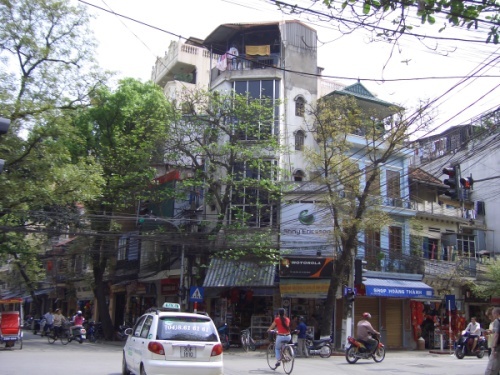
Figure 8. Small scale parcels in South East
Asian cities make consolidation difficult.
The divergence between existing land uses and formal parcels is often
profound (Figure 8) and compounds reconstruction and compensation
issues. Discrimination between legal and illegal land development
distributes compensation unfairly, and leads to operative paralysis in
those developing countries where “legalised” processes for land use
planning, development and tenure regulation are not available or poorly
implemented. As Figure 8 shows, determination of “ownership” of land
among urban dwellers is often not precise even with a boundary system.
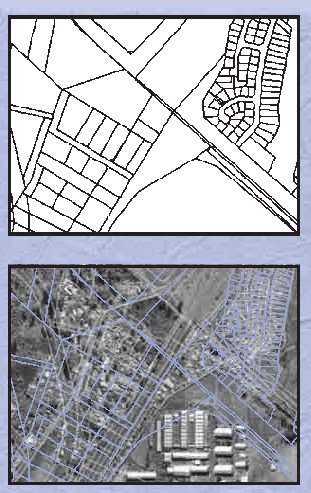
Figure 9. Lack of consistency between formal
and informal arrangements. (UN-HABITAT 2004b, page 5.)
Building land delivery competencies
Within this array of complex issues, three “break through” tools can
improve land delivery processes. These are generally within the
competence of most governments. While they are independent of a
country’s ability to reach over-all compliance with good governance
indicators and land governance indicators, they are consistent. These
tools are not new and are supported by their own body of research and
experience. They are: a quick and effective land information system, a
government level tool; a strong and systematically enforced
anti-eviction law, an empowerment tool; and guidelines for management of
land grabbing, a win-win tool for foreign investors and host
governments.
Land information system – government level initiative
In the vacuum of professional surveying capacity, most developing
countries increasingly rely on land information systems (LIS) moving
into cadastral surveying as resources become available. A geographic
information system (GIS) based LIS is one of the emerging new tools
available through new spatial technologies. A systematic tool that
relates GIS, remote sensing and field surveying is described by
UN-HABITAT (2008). The tool produces a comprehensive but quick and
inexpensive information system to service especially land use planning
and property taxation. The results do not replace, and indeed cannot
replace, cadastral surveying that gives precise parcel mapping,
scientific coordination of legal boundaries with plan information, and
land use identification. A GIS based LIS offers obvious advantages for
managing people movement, consultation, and planning associated with
land delivery and especially compulsory acquisition.
Anti eviction strategies – grass roots empowerment
Countries with inadequate land administration systems and informal
markets almost inevitably use forced evictions in land delivery
processes. Many evictions, including those based on national legal
enforcement orders, ignore the international and constitutional
legislation which guarantees the right to housing and other human rights
(UN-HABITAT Advisory Group on Forced Evictions, 2007; UN Basic
Principles and Guidelines on Development-Based Evictions and
Displacement, 2007). These follow the definition of minimum security of
tenure as the rights of individuals and groups to effective protection
by the state against forced evictions (Expert Group Meeting on Urban
Indicators, 2002). Strategic impact of flexible legal formulae, like
anti-eviction laws, were further explained by Augustinus and Benschop
(2007).
In land acquisition processes these anti-eviction laws empower local
people to claim a role in negotiations related to a development,
especially if the laws provide a clear underlying opportunity for them
to complain to courts if they are ignored. The strategy is therefore
focused on capacity building at grass-roots level rather than at
government administrative levels. Good governance indicators are
therefore tested in the general courts system where they are demanded as
part of national ability to use a rule of law.
Management of hard cases of land grabbing – an initiative for
developers
Land grabbing is a common and negative aspect of land delivery. It
foments long lasting tensions and undermines civil peace. Criticism of
governments of developing countries for their failures to meet
international standards for management of land grabbing is unhelpful.
Governments need help and support in order to establish formal capacity
to manage their land delivery systems, for instance along the lines of
the recommendations for a code (von Braun and Meizen-Dick 2009). This
initiative involves strategic engagement of foreign investors and their
host countries in adopting a self imposed code of conduct for investment
in agricultural land. The code assists target countries to strengthen
their policy environment and implementation capacities by combining
their efforts with those of investors. The range of terms and conditions
in the suggested code delivers win-win solutions for all. The issues
covered are much wider than mere land administration standards, and
include implementation of good governance standards (transparency) and
human rights based standards to protect local people while delivering
essential development opportunities.
6. BUILDING THE FUTURE
The new approaches in land administration encourage civil society,
developers and governments to use new tools in land delivery processes.
The broadening of land administration theory into multi-disciplinary
competence is both welcome and essential. The addition of non-technical
goals in building sustainable systems is compatible with articulation of
standards and guidelines on land acquisition.
No developing country is in a position to apply best practice methods
throughout its entire suite of land administration processes. However,
the lessons from land administration and good governance theories are
capable of informing change strategies in most countries. Indeed, many
of the less developed nations are in a better position to adapt their
systems to modern standards than are economically successful nations
where legacy systems and technologies inhibit substantial change.
Land development is a constant in all nations and the management
tools selected by a country need to be developed in the context of their
capacity to contribute to overall good governance and sustainability.
Compulsory land acquisition, whether for development aid projects or
private projects, needs tools that work at the country level. Unless
appropriate tools are selected, land acquisition planning associated
with development aid and project financing will concentrate on
identifying standards for the social processes associated with movement
of people away from the development site and into replacement sites.
This focus misses the point that most countries need to build capacity
to undertake essential scalable and technical land delivery processes.
Other tools have unforeseen consequences. A legal framework is always
recommended; however, legalism and formalism can paralyze land delivery,
even for essential public infrastructure projects, a problem now evident
in Indonesia.
From the perspective of capacity building in land administration
efforts to improve land delivery processes must improve formal and
technical capacity to use formal systems to manage the creation of
parcels. Long term improvements that will assist removal of residents
and occupiers and their resettlement in permanent homes and alternative
work opportunities require transparent processes, formal systems that
give parcel identification, resilient boundaries and a large scale base
map built by using modern spatial technology to record coordinates. Each
of these adds capacity in the national LAS.
REFERENCES
- Asian Development Bank, 2009, Policy Paper, Safeguard Policy
Statement, Manila
- Augustinus, Clarissa and Majolein Benschop, 2007, Security of
Tenure - Best Practices, UN-Habitat, Nairobi, Kenya.
- Burns, Anthony 2008, Good Governance in Land Administration,
presentation to Land Administration Workshop: Knowledge Sharing for
the Future, 14 August 2008, Canberra, Australia,
http://www.landequity.com.au/documents/TonyBurns-GoodGovernanceinLandAdministration-14August2008.pdf
- COHRE Centre on Housing Rights and Evictions (COHRE) 2006
Pinheiro Principles,
http://www.cohre.org/store/attachments/Pinheiro%20Principles.pdf
- Durand-Lasserve, Alain, 2009, Land Governance for Rapid
Urbanisation, Presentation Land Governance For Rapid Urbanisation,
Land Policies and MGDs, In Response to Newly Emerging Challenges,
9-10 March Washington DC, World Bank and FIG.
http://siteresources.worldbank.org/INTIE/Resources/A_DurandLasserve.ppt#258
- Enemark, Stig 2004, Building Land Information Policies.
Proceedings of Special forum on Building Land Information Policies
in the Americas. Aguascalientes, Mexico, 26-27 October 2004.
http://www.fig.net/pub/mexico/papers_eng/ts2_enemark_eng.pdf
- Enemark, Stig, 2005, unpublished paper on author’s collection.
- Enemark, Stig, 2009, Spatial Enablement and the Response to
Climate Change and Millennium Development Goals, UN Regional
Cartographic Conference for Asia Pacific, 26-30 October 2009,
Bangkok.
- Enemark, Stig, 2009a, Facing the Global Agenda – Focus on Land
Governance, FIG Working Week, Eilat, Israel, 3-8 May 2009, and FIG
Article of the Month, July 2009
- FAO, 2007, Good Governance in Land Tenure and Administration.
Land Tenure Studies #9. Rome
- FAO Land Tenure Working papers
#8. Voluntary Guidelines for
Responsible Governance in Tenure of Land and Other Resources: From
Civil Society Perspectives, Jan 09
#9. Issues from an
International Institutional Perspective, May 09, and
#10. Discussion paper “Towards Voluntary Guidelines on
Responsible Governance May 09.
(
http://www.fao.org/nr/tenure/infores/lttpapers/en/ )
- FAO, 2009a, Good Goverment in Land Administration: Principles
and Good Practices, Wael Sakout, Babette Wehrmann and Mika Pettri
Torhonen, http://www.fao.org/docrep/011/i0830e/i0830e00.htm
- FIG, Working Group 9, Good Practices for Compulsory Purchase,
http://www.fig.net/pub/fig2009/ppt/ts07e/ts07e_viitanen_ppt.pdf
- Land Equity International Pty Ltd, Draft Conceptual Report on
Good Governance in Land Administration, Page 20. Land Equity
International, Wollongong, Australia, circulated for comment and not
citation, The reference here aims to encourage readers to access the
Draft Report and forward comments to Land Equity
http://www.landequity.com.au/publications/Land%20Governance%20-%20text%20for%20conceptual%20framework%20260508.pdf
- Julian Quan, 2007, Towards a Harmonised Set of Land Indicators,
UNECA, Addis Ababa, 3 May 2007.
http://www.uneca.org/eca_programmes/sdd/documents/land-policy/Quan%20land%20indicators%20UNECA.ppt
- UN-HABITAT, 2002, Expert Group Meeting on Urban Indicators,
Nairobi, Kenya.
- UN-HABITAT, 2004a, Handbook on Best Practices, Security of
Tenure and Access to Land, Nairobi.
- UN-HABITAT, 2004b, Pro-Poor Land Management, Integrating Slums
into City Planning Approaches, Nairobi.
- UN-HABITAT, 2008, Systematic land Information and Management:
Technical Manual for Establishing and Implementation of a Municipal
Geographic Information System, Nairobi, Kenya
- von Braun, Joachim and Ruth Meizen-Dick, “Land Grabbing” by
Foreign Investors in Developing Countries: Risks and Opportunities,
International Food Policy Research Institute (IFPRI) Policy Brief
13, April 2009.
http://www.landcoalition.org/pdf/ifpri_land_grabbing_apr_09.pdf
- Wallace Jude, 2009, Managing Social Tenures, Comparative
Perspectives on Communal Land and Individual Ownership: Sustainable
Futures, Routledge, London, in press.
- Williamson, Ian, Stig Enemark, Jude Wallace, Abbas Rajabifard,
2010, Land Administration Systems for Sustainable Development. ESRI
Press, San Diego. In press.
BIOGRAPHICAL NOTES
Jude Wallace is a lawyer who specialises in land policy and land
administration systems. She has worked in academia, the legal profession
and government. Previous positions include Deputy Chairperson of the Law
Reform Commission of Victoria and the Estate Agents Board.
She focuses on developing:
- appropriate legal and institutional frameworks for land
administration in tenure and titling, land transaction processes,
land markets, planning, securities and finance, professional
regulation, subdivision and development, and resource management
- integrated advice and reform strategies.
Her recent work is principally in Australia, Indonesia, Vietnam,
Iran, United Arab Emirates and East Timor. She is currently working on
an Asia Development Bank project with on implementing the Basic Agrarian
Law, Undang Undang Pokok Agraria.
CONTACTS
Ms Jude Wallace
Geomatics
The University of Melbourne
Parkville
AUSTRALIA
Tel. +61 3 8344 4431
Fax + 61 3 9347 2916
Email: j.wallace@unimelb.edu .au
Web site: http://www.geom.unimelb.edu.au/people/jwallace.html
 |

































